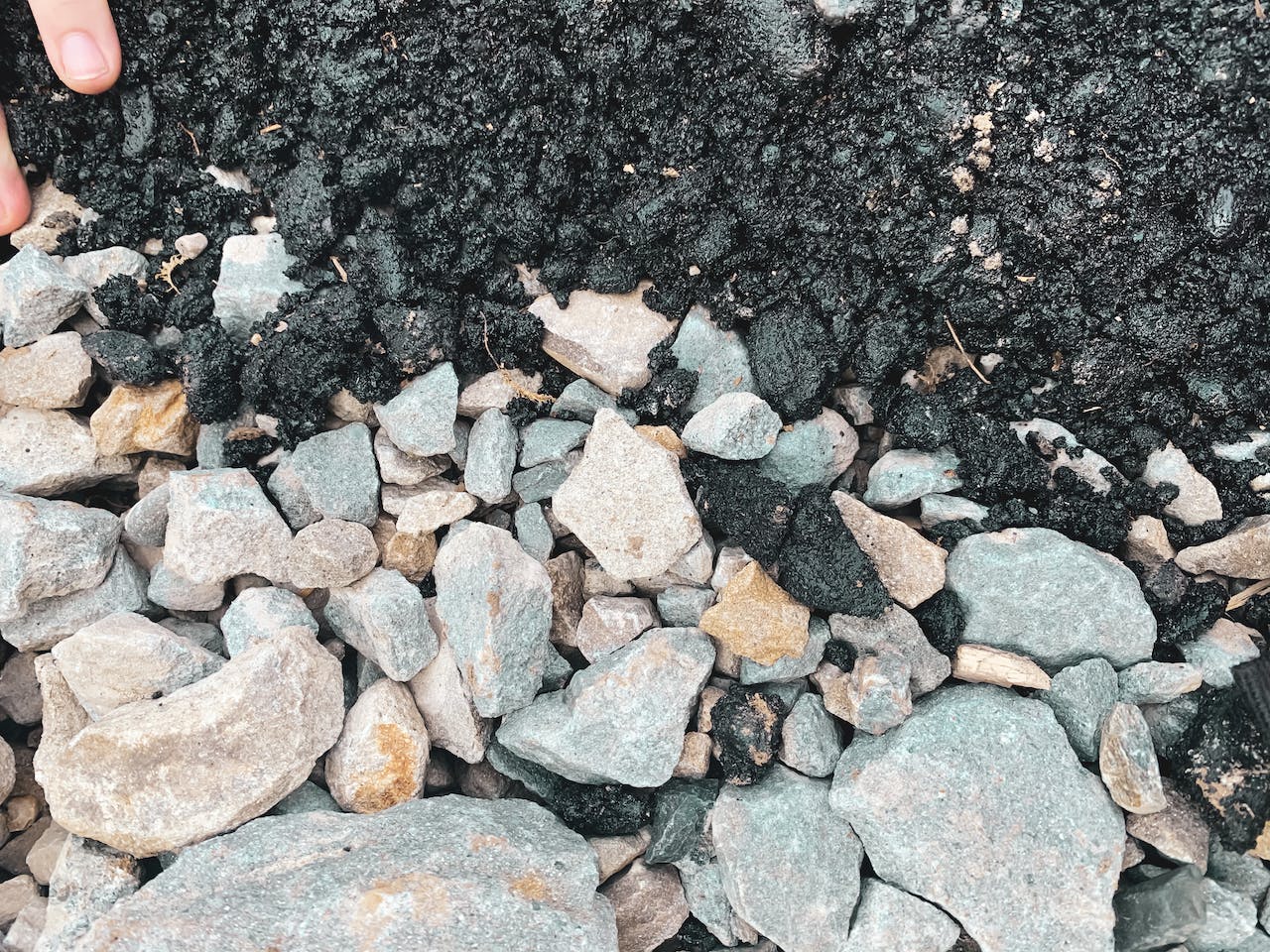Garnets, the stunning group of gemstones renowned for their deep red hues, are not merely objects of aesthetic allure. Their multifaceted nature extends far beyond the jewelry industry, reaching into the realms of industry and technology. While garnets have captivated hearts and adorned royalty for centuries, their diverse applications have been integral to many fields, including industrial, technological, and scientific domains. This article delves into the many uses of garnets, exploring their roles in industrial blast-cleaning, polishing, filtration, and water jet cutting, among other applications. By examining these varied facets of garnet utilization, we can appreciate the full extent of their significance in today’s world.

The Geology of Garnets
Before delving into the wide-ranging applications of garnets, it is essential to understand the geology and classification of this gemstone. Garnets are a group of minerals belonging to the silicate family, characterized by a variety of chemical compositions and colors. They are typically found in metamorphic rocks, where heat and pressure have transformed pre-existing minerals into new forms. Commonly, garnets exhibit colors such as red, green, yellow, and orange, and their composition can vary based on the type of garnet.
The six main types of garnets are:
- Almandine: Deep red to brownish-red in color, rich in iron content.
- Pyrope: Typically bright red, pyrope garnets are often used in jewelry.
- Spessartine: Ranging from red to orange, these garnets contain manganese.
- Andradite: Exhibits various colors, including green, yellow, and brown.
- Grossular: Found in shades of green, yellow, and brown.
- Uvarovite: A green garnet, often used as a mineral specimen rather than in jewelry.
Now, let’s explore the many uses of garnets, both within and outside the world of gemstones.
Industrial Blast-Cleaning
Garnets, due to their hardness and abrasive properties, have found significant utility in industrial blast-cleaning processes. This technique involves the removal of surface contaminants, such as rust, paint, or scale, from various materials, including metal, concrete, and even ship hulls. The abrasive power of garnets, harnessed through high-pressure blasting systems, makes them a crucial tool in the restoration and maintenance of industrial equipment and structures.
One of the key advantages of using garnets for blast-cleaning is their ability to abrade surfaces effectively without causing damage or warping to the underlying material. The combination of garnet’s natural hardness and its ability to break down into finer particles during the cleaning process ensures a thorough and even removal of contaminants. Additionally, garnets are environmentally friendly abrasives, as they do not produce harmful byproducts during the cleaning process.
Water Jet Cutting
Water jet cutting is a revolutionary method that relies on the principles of high-pressure water combined with abrasive materials, with garnet being a common choice. In this process, a focused jet of water mixed with garnet particles is directed at a material, allowing for precise and clean cutting without the need for heat, potentially harmful chemicals, or other mechanical forces. This technique has gained immense popularity in various industries due to its accuracy and versatility.
Garnet’s role in water jet cutting is to enhance the abrasive action of the water jet, which allows for the cutting of materials as diverse as metal, stone, glass, and composites. The abrasive garnet particles within the water jet effectively erode the material, producing precise cuts with minimal waste. This method is particularly advantageous when dealing with heat-sensitive materials or when intricate designs are required.
Polishing and Lapping
Garnets, appreciated for their dazzling appearance, also play a pivotal role in enhancing the shine and smoothness of a wide range of materials. Polishing and lapping are techniques used in various industries to create surfaces with a mirror-like finish, and garnets serve as excellent abrasives in these processes.
Garnet abrasive powders are employed for polishing hard materials such as glass, metals, ceramics, and even semiconductors. The fine particles of garnet, when used in conjunction with polishing compounds or pastes, aid in removing imperfections, scratches, and irregularities on surfaces, resulting in a polished and refined look. The use of garnets in these applications ensures consistency and precision, making them indispensable in the manufacturing of high-quality optical lenses, precision components, and mirrors.
Filtration Applications
Garnets find yet another important application in the field of filtration. Due to their chemical stability and abrasive nature, garnet particles are employed in water and air filtration systems to remove impurities and solid particles from fluids and gases.
In water filtration, garnets are often used in multi-media filters alongside materials like anthracite, sand, and gravel. These filters efficiently remove suspended solids, turbidity, and other impurities from water sources, making them suitable for both industrial and municipal water treatment. Garnet’s high density and low solubility make it a reliable choice for trapping particles and facilitating the filtration process.
Air filtration also benefits from garnet’s abrasive properties. Garnet media, in the form of garnet paper or cloth, is used in air filter systems to trap and remove dust and particulate matter from the air. These filters are commonly utilized in industrial settings, cleanrooms, and residential HVAC systems, improving indoor air quality and preventing damage to sensitive equipment.
Abrasives in Abrasive Blasting
Apart from industrial blast-cleaning, garnets serve as abrasives in various other surface preparation applications. This includes sandpaper, grinding wheels, and abrasive cloth, where garnet grains are securely bonded to substrates, allowing for precise and controlled abrasion.
Garnet abrasives are particularly suitable for these applications due to their natural hardness and ability to maintain their sharp edges during grinding and sanding. This ensures consistent and efficient material removal, making garnet-based abrasives ideal for tasks such as woodworking, metalworking, and surface finishing.
Water Filtration in Swimming Pools
The recreational industry, specifically swimming pools, also benefits from the use of garnets. Garnet sand, often referred to as “garnet pool filter media,” is used in swimming pool filtration systems. This garnet sand serves as an effective filtration medium, capable of removing impurities, debris, and algae from pool water, ultimately contributing to the maintenance of clean and clear swimming pool environments.
Garnet pool filter media has several advantages over traditional filtration mediums like sand. It offers better water clarity, requires less backwashing, and is environmentally friendly. The sharp edges of garnet particles help in trapping finer particles and organic matter, ensuring optimal water quality in swimming pools.
High-Performance Abrasives in Grinding and Cutting
Garnet abrasives are widely employed in the manufacturing and construction industries for grinding and cutting operations. The abrasive nature of garnet, combined with its durability, makes it a valuable tool in achieving precision and quality in various processes.
In the realm of metal fabrication, garnet abrasive materials are utilized in grinding and cutting applications. Garnet-coated grinding wheels are effective in shaping and finishing metal components. The abrasive grains within these wheels provide controlled material removal, making them essential for producing precise and smooth surfaces in the production of automotive parts, aerospace components, and other metalwork.
Garnet’s utility extends to cutting processes, where it is used as an abrasive in cutting tools and equipment. For instance, abrasive saws with garnet-infused blades are capable of efficiently cutting through materials like stainless steel, ceramics, and concrete. The abrasive action of garnet enhances the cutting efficiency and prolongs the life of cutting tools.
Oil and Gas Industry Applications
The oil and gas industry, known for its demanding and high-stress environments, relies on durable materials for its equipment and machinery. Garnets have found applications in this sector due to their resistance to extreme conditions and their abrasiveness.
One prominent application of garnets in the oil and gas industry is the use of garnet sand in abrasive jet cutting for downhole applications. In this context, garnet-infused water jets are employed to cut and modify downhole equipment and casings, allowing for precise and efficient operations in the field.
Additionally, garnets have been used in hydraulic fracturing, commonly known as “fracking,” as proppants. Garnet proppants are small, hard particles introduced into hydraulic fractures to keep the fractures open, facilitating the extraction of oil and gas. The resilience of garnet proppants under high pressures and temperatures makes them suitable for this purpose.
Environmental Remediation
Environmental remediation projects often involve the removal of contaminants and pollutants from soil, sediment, and groundwater. Garnet abrasives are applied in these projects to enhance the efficiency of remediation processes, such as soil washing and sediment decontamination.
The abrasive action of garnets is employed in conjunction with water in soil washing systems, where contaminated soil is mixed with abrasive-laden water to break down contaminants and facilitate their removal. This method is particularly effective in the cleanup of sites contaminated with heavy metals and hazardous chemicals.
In sediment decontamination, garnet-infused water jets are used to dislodge and remove contaminants from underwater sediments. The high-pressure water jets, combined with the abrasive action of garnet, dislodge contaminants without dispersing them further into the surrounding environment.
Gemstone Industry and Jewelry
While the focus of this article has primarily been on the industrial and technological applications of garnets, it is essential to acknowledge their timeless role in the gemstone industry and jewelry. Garnets, with their deep and rich colors, have been cherished by gem enthusiasts and jewelry makers for centuries.
Garnets come in a variety of colors, but the most well-known and sought-after is the deep red variety. Red garnets are often used as centerpieces in rings, necklaces, and earrings, and they are cut into various shapes such as rounds, ovals, and emerald cuts. The sparkling brilliance of garnets, combined with their vibrant color, makes them a popular choice for both traditional and contemporary jewelry designs.
Garnets are also used as accent stones in jewelry, complementing other gemstones like diamonds, sapphires, and emeralds. Their versatility in design and durability make them a favorite among jewelry designers and collectors.
Industrial Sandblasting
In the realm of industrial surface preparation for coating applications, garnets are frequently used as abrasive media in sandblasting. Sandblasting is a common method for cleaning and preparing surfaces before the application of protective coatings, such as paint, epoxy, or powder coatings.
Garnet abrasive media used in sandblasting operations effectively remove rust, corrosion, and old paint from surfaces, leaving them clean and ready for coating. The angular nature of garnet particles ensures that coatings adhere securely to the prepared surface, resulting in longer-lasting and more durable finishes. Moreover, garnet abrasives produce minimal dust during the sandblasting process, which is advantageous for both worker safety and environmental considerations.
The use of garnet abrasives in sandblasting contributes to the quality and longevity of coatings on various substrates, from metal and concrete to wood and composites.
Conclusion
Garnets, celebrated for their captivating beauty, are far more than just precious gemstones adorning jewelry. These multifaceted minerals have carved out a crucial role in a wide range of applications, from industrial cleaning and cutting to environmental remediation and filtration. Whether it’s in the abrasive world of industrial surface preparation or the glittering world of jewelry, garnets continue to shine in their diverse applications.
As we’ve explored throughout this article, the unique properties of garnets – their hardness, abrasiveness, and durability – make them indispensable in numerous industries. Their ability to cut, polish, clean, and filter materials has a lasting impact on the quality, precision, and efficiency of countless processes. Additionally, garnets contribute to environmental efforts by aiding in soil and water cleanup and filtration, showcasing their versatility in addressing modern challenges.
In summary, the multifaceted world of garnets demonstrates that these gemstones are not just a source of beauty but also a source of innovation and efficiency across a spectrum of industrial and technological domains. With their continued and evolving applications, garnets will remain a valuable asset in the development and advancement of diverse industries, ensuring their relevance for generations to come.





